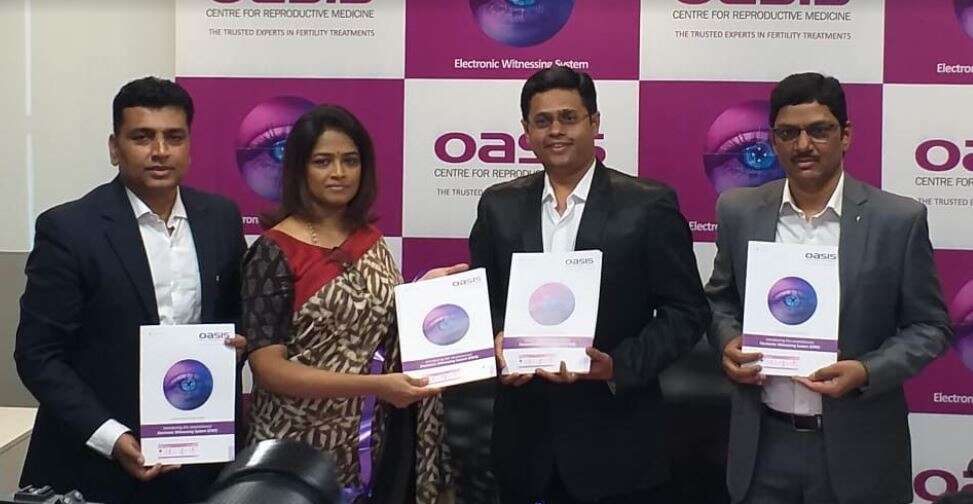- Hospitals
- 3 min read
World IVF Day: India’s 1st homegrown Electronic Witnessing System launched at Oasis Centre for Reproductive Medicine
Electronic Witnessing System is a 'track and trace' system covering every single stage of the treatment process.
This kind of terrible mishap though rare, but may happen once in a blue moon, which can shatter the faith of the patients on medical sciences and destroy the reputation of a fertility clinic. We cannot accept this mishap when the solution to this problem is already there, and a fertility clinic did not care to embrace this technology for zeroing the chances of any mix-up.
World IVF Day, is celebrated to commemorate the birthday of the first test-tube baby of the world Louise Brown who was born to this couple in Royal Oldham Hospital, United Kingdom. Today Louis Brown is a proud mother of two sons who were conceived naturally and celebrating her 41st birthday. She is the first among 7 million and still counting babies who have been born through IVF.
Talking on the occasion Dr Durga G Rao, Co-Founder and Medical Director of Oasis Centre for Reproductive Medicine stated that, “When you start your treatment at Oasis Fertility, you can be reassured that we take adequate care of your oocytes, embryos and sperm. We are now equipped with a state-of-the-art Electronic Witnessing System (EWS) in our laboratory, designed to further safeguard the transparency and ensure that the process is undertaken without any human errors. This technology is India’s first homegrown technology brought to us by ARTis Witness a pioneer in web-based fertility treatment software with the concept of Make in India.”
Electronic Witnessing System is a 'track and trace' system covering every single stage of the treatment process. This system improves traceability and quality control while reducing laboratory-based risk. It tracks samples at predefined procedural steps in IVF laboratories to prevent mix-ups and provide an automated solution for mandatory double witnessing. This is achieved through assigning unique IDs and personal codes for all the samples. These codes, tagged to the samples, enable easy detection signals, identification, tracking and recording at every step. Only once the identity is confirmed through EWS, the Embryologist will proceed with insemination. In an unlikely event of sample mismatch, the system will alert the Embryologist preventing potential errors. The unique ID is automatically checked against the tagged embryo before the transfer.
Adding to these points Dr Krishna Chaitanya – Scientific Head and Clinical Embryologist of Oasis Centre for Reproductive Medicine said that, "There are numerous benefits of using the Electronic Witnessing System, there is automated cross-checking which ensures critical detection and prevention of human errors. It is a safe and secure process which increases the confidence during every step of the cycle. EWS eliminates the potential risk of possible mismatching during sample handling and vulnerability to human errors including check omission, check incomplete and involuntary automaticity. It prevents embryologists from accidentally working on more than one patient's gametes at a time and marks each course step, ensuring prevention of omitting key tasks in the process."



COMMENTS
All Comments
By commenting, you agree to the Prohibited Content Policy
PostBy commenting, you agree to the Prohibited Content Policy
PostFind this Comment Offensive?
Choose your reason below and click on the submit button. This will alert our moderators to take actions